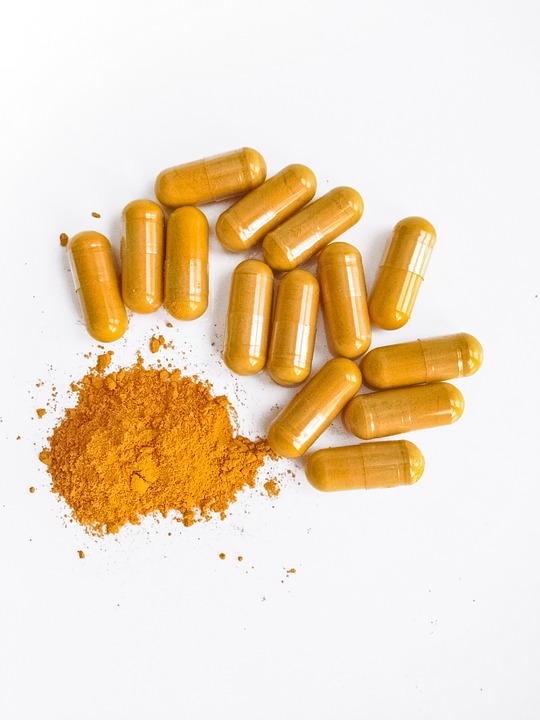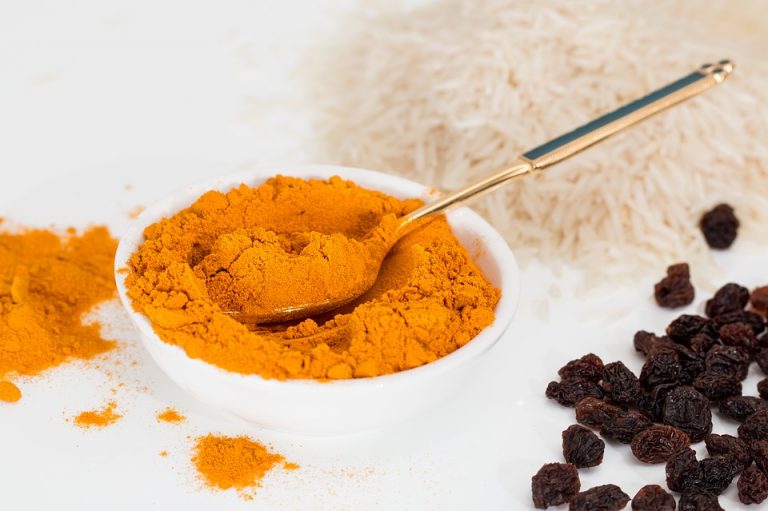Curcumin has gained fame as a means of broad health benefits. Since the state of our muscles, as some time ago, has been mapped to the general state of health, therefore the scientists have not overlooked the muscle tissue in their research on curcumin. By the end of May 2015, a study appeared online, which seemed to confirm the results obtained earlier by other researchers, results which discussed the beneficial effects of curcumin supplementation.
Curcumin increasing muscle mass - overview
These results were discussed again in an article called: "Curcumin versus myostatin". The network, however, is governed by its laws. For example, it happens that the network is currently getting some older research, when the editors of a particular scientific journal decide to publish their printed archival resources. This is exactly what we are dealing with in a 2008 Indonesian study exploring the effects of curcumin on muscle tissue regeneration, whose results have not appeared online until 2017. After all, they are so interesting that it’s worth discussing them in the form of another article dedicated to the topic of curcumin in the context of increasing muscle mass.
Curcumin increasing muscle mass - clinical study
One research proves the usefulness of curcumin in cessation of cachexia, i.e. muscle wasting resulting from the course of some wasting disease, such as cancer (Busguetes, 2001; Siddiqui, 2009, He, 2011). For chronic diseases, which reduce cachexia, we also include diabetes. Diabetic muscle atrophy is due to the low sensitivity of muscle tissue to insulin, which on the one hand "pumps" glucose into the muscle and thus normalizes its level in the blood, on the other hand stimulates the production of protein in muscle fibres by activating the binding enzyme the process of protein anabolism, bearing the mTOR symbol. And in the fight against atrophy accompanying the course of diabetes, turmeric may be helpful, as evidenced by at least three experiences - the 2010 Kangaroo and Xavier and Denga 2012, which investigated the relationship between curcumin and insulin in muscle cells. It has been established here that turmeric works synergistically with insulin in muscle cells, and this synergism is largely based on joint stimulation by both of these signalling molecules leading to mTOR kinase activation. In addition, turmeric improves insulin receptor activity, leading to activation of the pathway on which mTOR kinase is located, as well as that turmeric restores activity of this pathway in diabetes, which is accompanied by disease as we know it, muscular atrophy due to muscle tissue resistance For insulin, and consequently - insufficient stimulation of mTOR kinase.

Is curcumin really increasing muscle mass?
These issues were the subject of research work by the Taisuke Ono team, published in May 2015. Japanese scientists have induced experimental diabetes mellitus in this experiment, and then either did not give or feed the animals with curcumin in their diet. Two control rodents were also used in the study procedure - healthy mice either receiving or not receiving curcumin in food. Since previous studies by other researchers, discussed in the article mentioned above, showed that curcumin prevents catabolic hormone-disrupting muscle activity, among others. Such as catabolium (IL-1 beta) and cachectin (TNF alpha), therefore, the authors of this study decided not only to monitor the effects of curcumin on muscle mass and mTOR kinase activity but also catabolic hormone levels - both catabolines and cachectins but also myostatin - considered the strongest catabolic hormone, stopping, as its name implies, regeneration and development of musculature. Thus, after 2 weeks of experiment, it was found that curcumin was able to reduce 3-fold and 5.5-fold levels of cachectin and catabolide production in rodent muscle tissue, and significantly reduced 20% muscle myostatin concurrently. And it's in healthy rodents, which seems to indicate that as a myostatin blocker, curcumin should pass an exam, for example, in healthy, athletic athletes. Curcumin also increased 150% in diabetic and 125% in healthy rodents’ mTOR kinase activity in muscle fibres, and decreased the muscle protein breakdown by 20%. And finally, thanks to these mechanisms, it improved by about 20% muscle mass, measured by muscle weight, and about 40%, measured by cross-section of muscle fibres.
Other clinical study regarding that issue
On the other hand, the older study, which appeared only in the network (Soebadi, 2008), focused on the use of curcumin as a means of dealing with immobilization problems. Immobilization, e.g. after an accident or as a result of old age or illness, leads to muscle tissue loss. This is also the case with athletes who are affected by some serious injury. This disappearance of course results in later difficulties to get back to normal after rehabilitation, but also hinders the course of the healing process itself, because the working muscles produce tissue hormones (so called "myokines"), supporting the therapeutic process and generally healthy. Muscles are also the main consumer of glucose; the smaller your muscle mass, the higher your blood sugar. In this situation, it is not surprising that researchers are urgently looking for ways to effectively stop muscle wasting that is a result of immobilization.
Curcumin increasing muscle mass - summary and conclusion
The authors of the aforementioned study divided the rats into 3 groups, leaving one to control and immobilizing the other two for 2 weeks and giving one of the immobilized groups’ oral curcumin. Immobilization has reduced the size of muscle fibres of curcumin-deprived rats by 42.41% compared to the control group, which makes us realize that only two weeks of deprivation of our motion muscles can reduce their mass by almost half. At the same time, the muscle fibres of immobilized rats receiving curcumin reduced their size by only 25.48%, meaning that this yellow colour of the oriental spice halted about 50% of the muscle mass loss due to immobilization. This result can be read with equal success in the back, so that the intake of curcumin will increase the body weight by 50% in the form of muscle mass gain, with respect to colleagues who do not use this supplement as a dietary supplement. This effect almost perfectly correlates with the results of the above-mentioned study, where the administration of curcumin to rodents for 2 weeks led to a 40% increase in muscle mass. However, this effect must be interpreted well: if a colleague without curcumin helps improve his muscle mass by 2 weeks, for example by 0.25, then by training and using 4 curcumin daily capsules, you have the chance to gain 0.5 kg of muscle at the same time.
And although the daily dose applied here was about 3 grams, i.e. 4 standard capsules (double the recommended dose), however, given the weight gain of our muscles, it seems that it is worth using turmeric supplements as adjuvants, development of musculature, e.g. in sports preparation programs.






